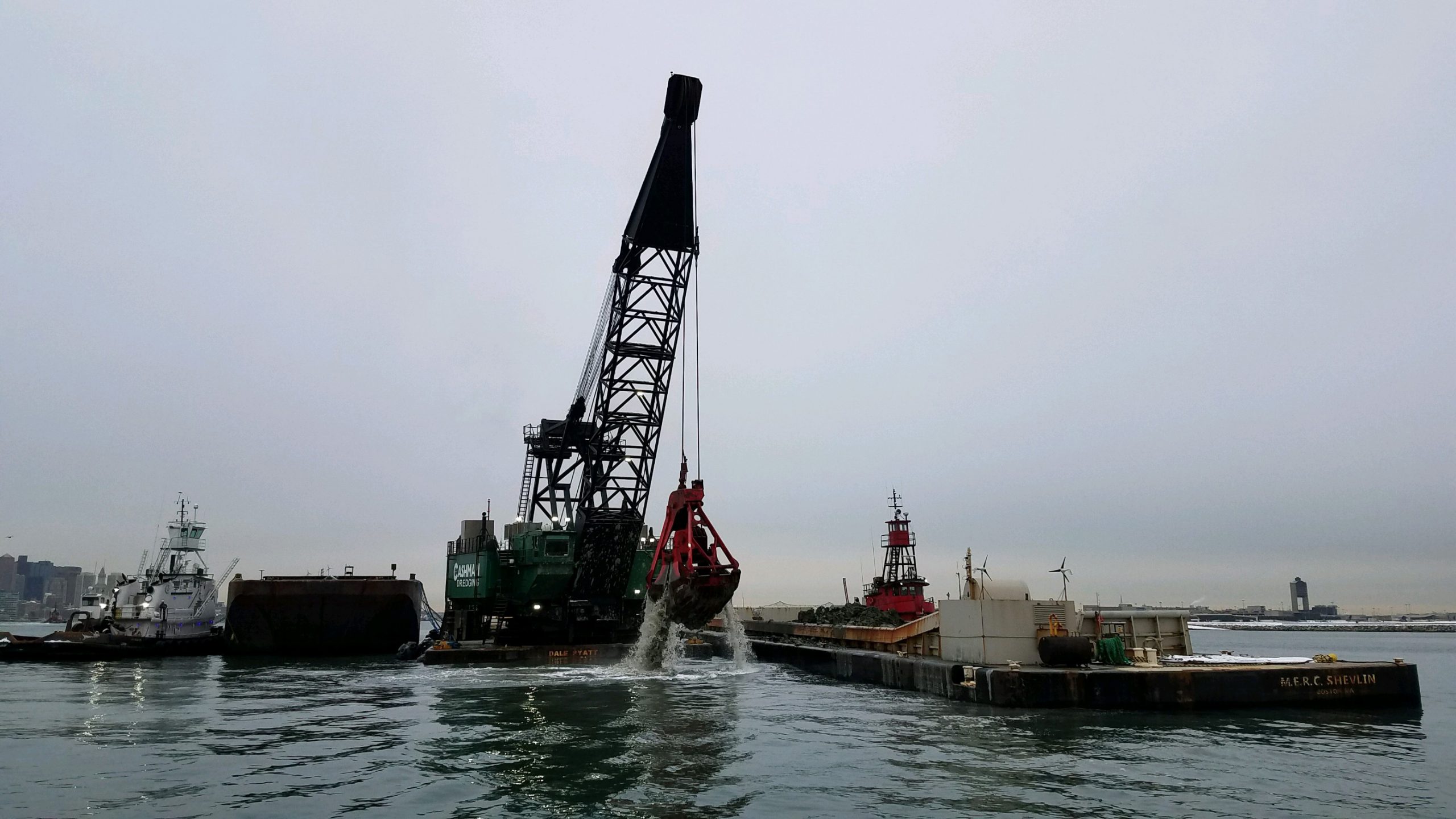On April 5, the U.S. Army Corps of Engineers New England District reached a project milestone on the Boston Harbor Navigation Improvement Project, removing 4 million cubic yards of dredge material as part of phase two of the project.
Approximately 7.7 million cubic yards of dredge material and weathered rock, and 200,000 to 500,000 cubic yards of hard rock remain to be removed before the project is fully completed by December 2021.
This is a three-phase project. Phase 1 (completed) involved constructing a Confined Aquatic Disposal (CAD) cell by dredging 1,000,000 cubic yards of material and disposing of that material at the Massachusetts Bay Disposal Site. Once the CAD cell was constructed, maintenance dredging of approximately 800,000 cubic yards of silty material from portions of the 40-foot Main Ship Channel, the 40-foot deep Inner Confluence, and portions of the 35-foot deep channel, were placed into the newly constructed CAD cell. The $12.8 million contract was awarded to Great Lakes Dredge and Dock in September 2016. Construction started in July 2017 and was completed in December 2017.
Phase 2 (ongoing) involves dredging 11.7 million cubic yards of silt, blue clay, till and weathered rock. The $122.2 million contract was awarded to the Joint Venture of Cashman Dredging Inc. and Dutra Group in February 2018. Construction started in July 2018 and is anticipated to be completed in October 2021.
Approximately 11.7 million cubic yards of material will be removed from the following components of the Boston Harbor Federal Navigation Project: deepening and widening the Broad Sound North Channel to -51 feet Mean Lower Low Water (MLLW); deepening and widening the Main Ship Channel to the Conley Terminal, including the turning basin to -47 feet MLLW; and deepening the President Roads Anchorage and deepening the lower Reserved Channel to -47 feet MLLW.
The dredge material is being placed in the Massachusetts Bay Disposal Site (MBDS), approximately 20 miles offshore of Boston Harbor, with the exception of a small fraction of the material that was placed as a cap to the Main Ship Channel Confined Aquatic Disposal (CAD) cell, just downstream of the inner confluence of the Chelsea and Mystic Rivers.
Phase 3 (future work) will involve removing approximately 200,000 to 500,000 cubic yards of hard rock. The contract solicitation is anticipated to be released in spring 2020 with the work getting underway later that year. This final contract, when finished, will complete the entire Boston Harbor Improvement project. Completion of the entire project is expected by December 2021.
Improvement deepening of Boston Harbor was authorized for construction by the 2014 Water Resources Reform and Development Act (WRRDA). WRRDA referenced a Chief of Engineers Report, signed Sept. 30, 2013, which was transmitted to Congress on Feb. 26, 2014.




